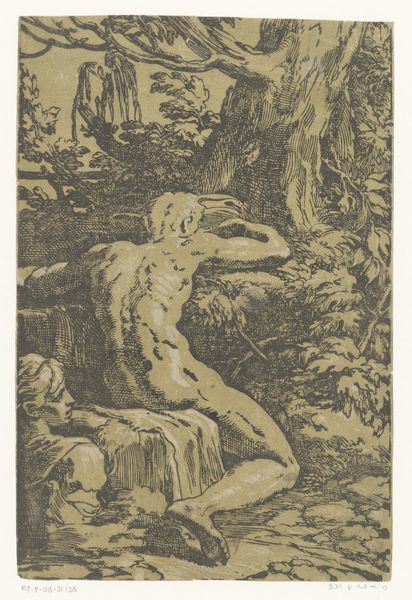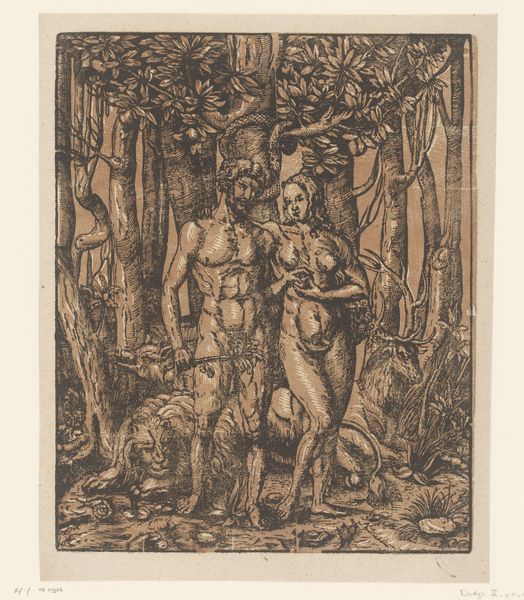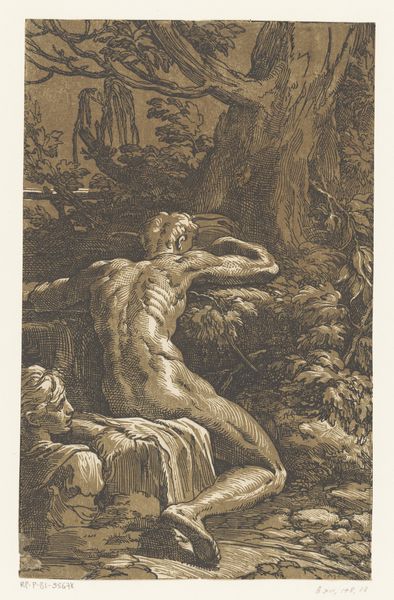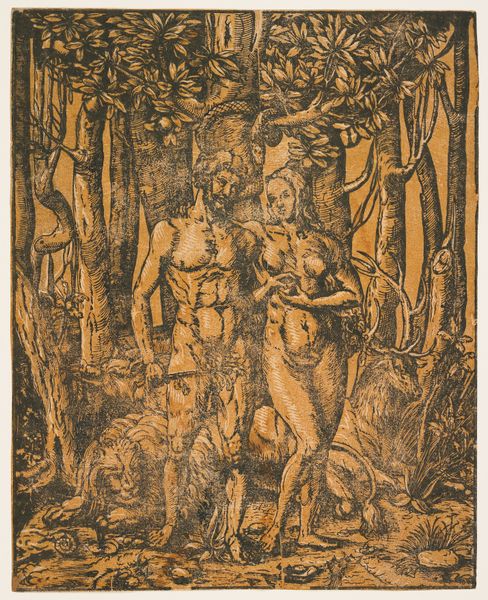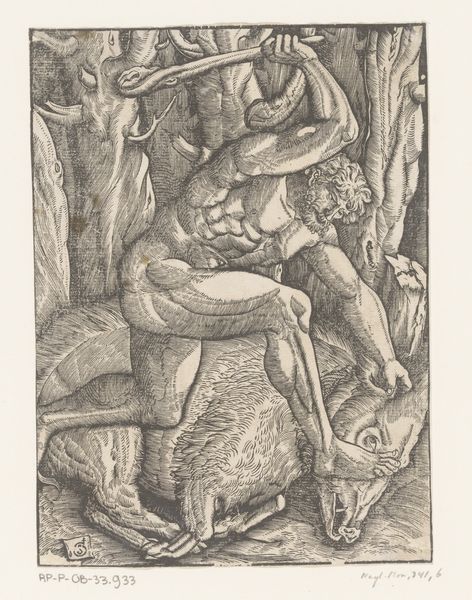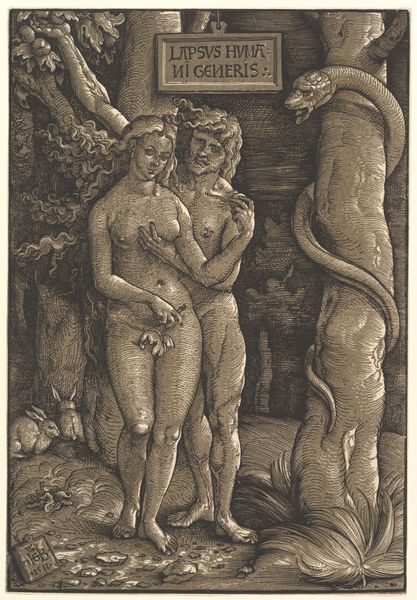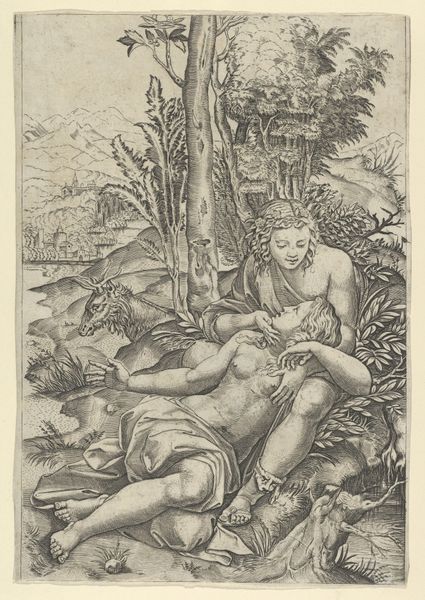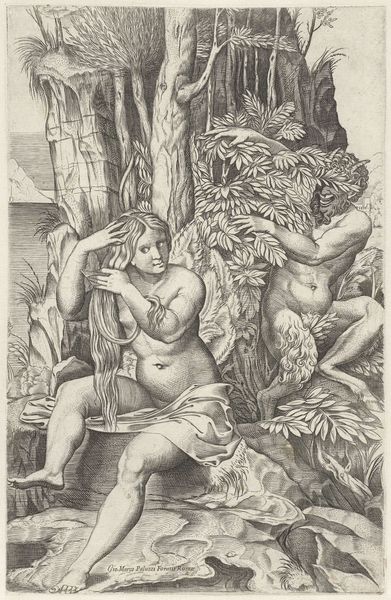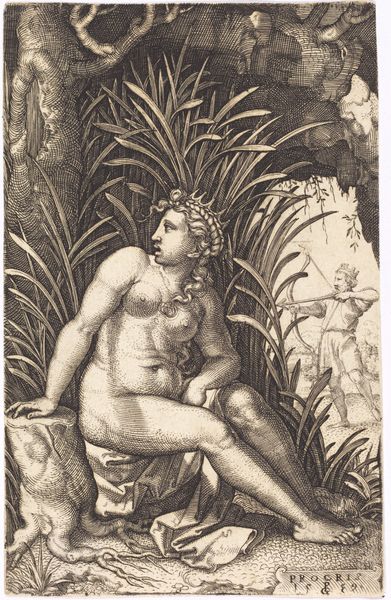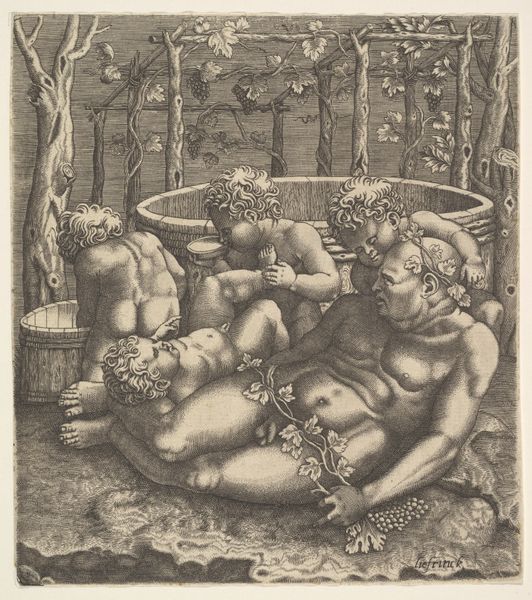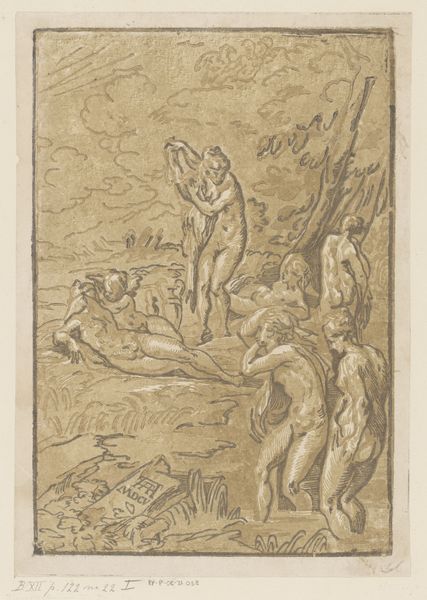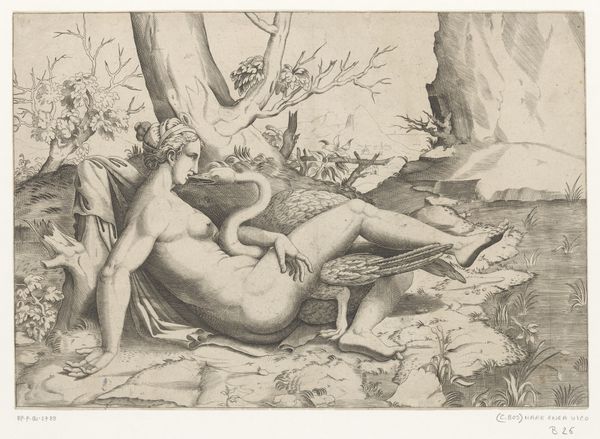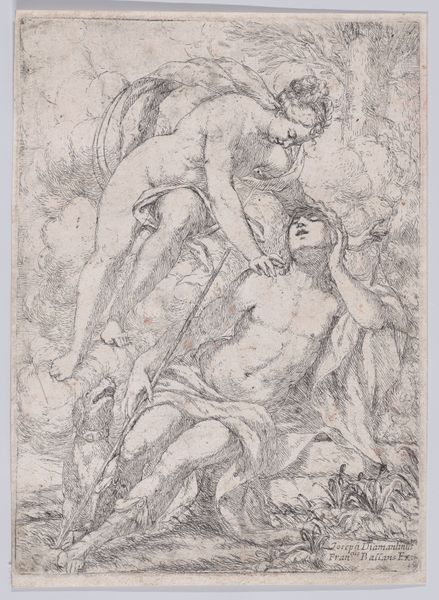
drawing, print, woodcut
#
drawing
# print
#
landscape
#
figuration
#
woodcut
#
northern-renaissance
Dimensions: Sheet: 7 1/2 × 5 7/16 in. (19.1 × 13.8 cm)
Copyright: Public Domain
Hans Baldung created this woodcut, "St. Jerome in the Desert," using blocks of wood, knives, and gouges to carve the image, and then printed the image onto paper. Look closely and you'll notice how the material and process influence its appearance: the grainy texture, the stark contrasts between light and dark, and the bold lines that define the figures of Saint Jerome and the lion. Woodcut, a relief printing technique, required Baldung to painstakingly carve away the areas that would not receive ink, leaving the design raised on the surface of the block. This labor-intensive process speaks to the cultural significance attached to printed images in the 16th century, when print was a relatively new technology. It democratized images, previously only available as unique paintings. We can appreciate how Baldung adapted his artistic vision to the possibilities and limitations of this medium. By emphasizing the importance of materials, making, and context, we can fully appreciate the artistic achievement on display.
Comments
No comments
Be the first to comment and join the conversation on the ultimate creative platform.
